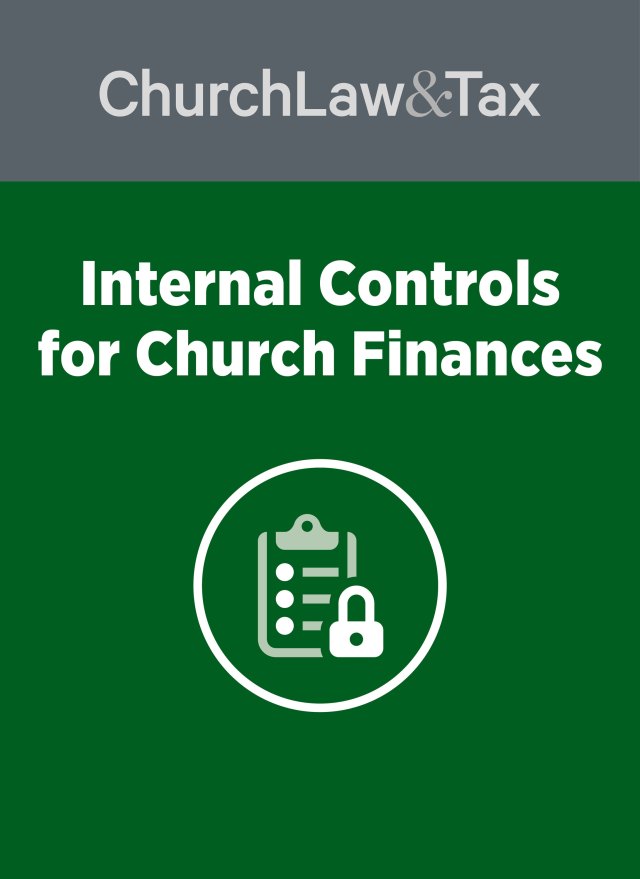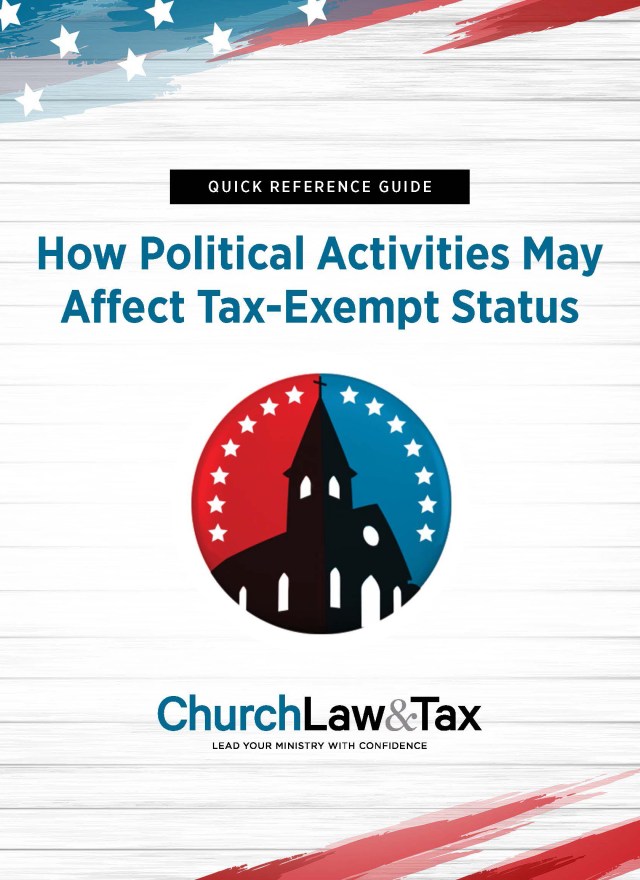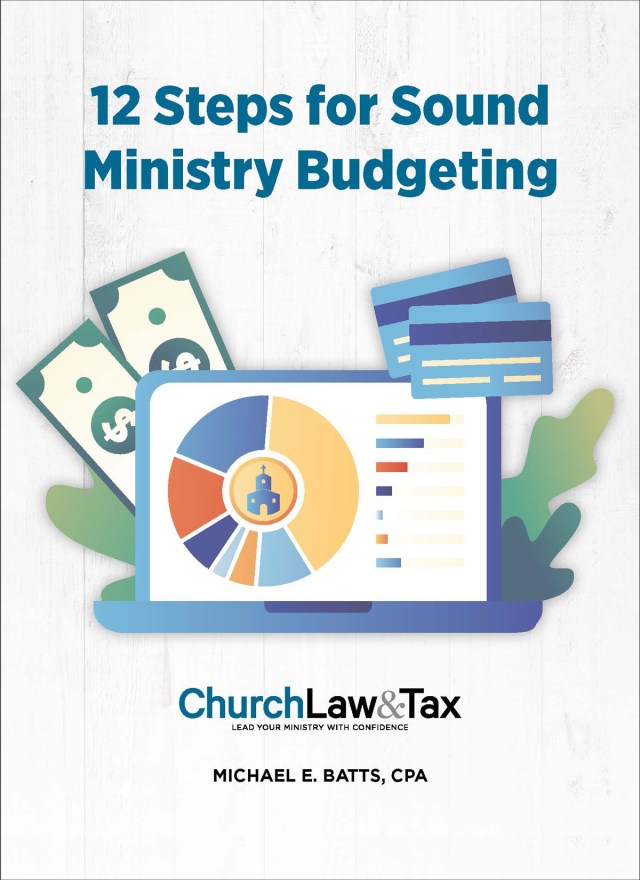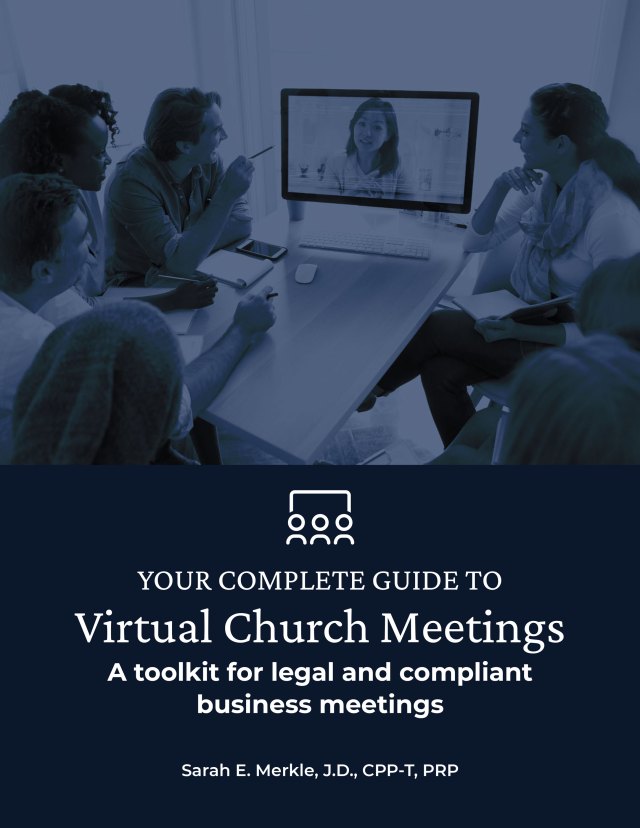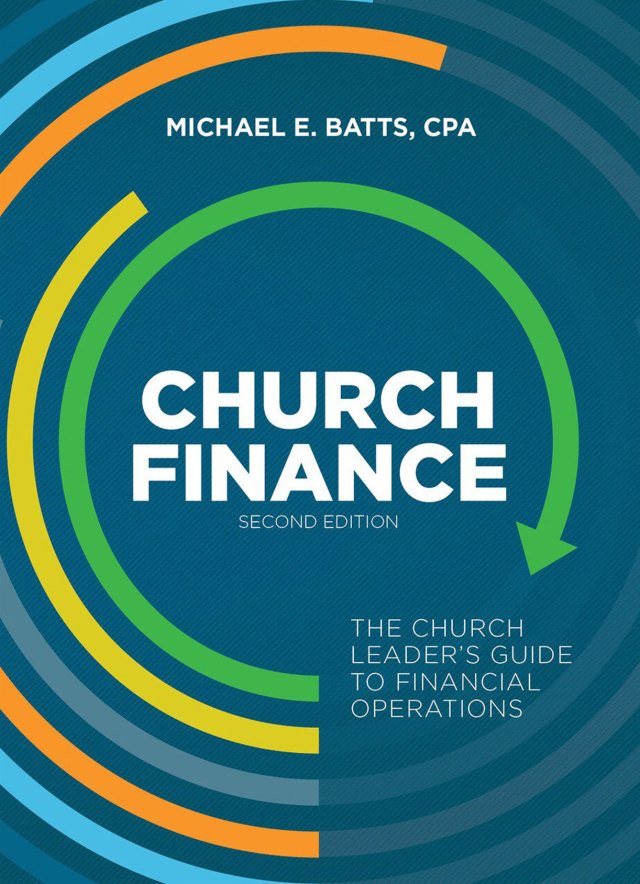Can the risk of embezzlement be reduced? If so, how? The good news is that there are number of steps that church leaders can take to reduce this risk, and most of them are quite simple. Consider the following:
1. Implement an effective system of internal control. The first and most effective deterrent to embezzlement is a strong system of “internal control.” Internal control is an accounting term that refers to policies and procedures adopted by an organization to safeguard its assets and promote the accuracy of its financial records. What procedures has your church adopted to insure that cash receipts are properly recorded and deposited, and that only those cash disbursements that are properly authorized are made? These are the kinds of questions that are addressed by a church’s system of internal control. A table in this newsletter addresses a number of common weaknesses in church internal control that increase the risk of embezzlement. The table provides helpful suggestions for responding to these weaknesses.
Key point. The most important point to emphasize is “division of responsibilities.” The more that tasks and responsibilities are shared or divided, the less risk there will be of embezzlement.
Key point. Many churches refuse to implement basic principles of internal control out of a fear of “offending” persons who may feel that they are being suspected of misconduct. The issue here is not one of hurt feelings, but accountability. The church, more than any other institution in society, should set the standard for financial accountability. After all, its programs and activities are rooted in religion, and it is funded entirely with donations from persons who rightfully assume that their contributions are being used for religious purposes. The church has a high responsibility to promote financial accountability. This duty is simply not met when the practices described above are followed.
2. Screen persons with financial responsibility. Some churches screen bookkeepers, accountants, and other employees who will have access to funds or be involved in financial decisions. Screening can consist of obtaining references from employers, prior employers, and other churches or charities with which the person has been employed or associated.
3. Annual audits. A church can reduce the risk of embezzlement by having an annual audit of its financial records by a CPA firm. An audit accomplishes three important functions:
- An audit promotes an environment of accountability in which opportunities for embezzlement (and therefore the risk of embezzlement) are reduced.
- The CPA (or CPAs) who conducts the audit will provide the church leadership with a “management letter” that points out weaknesses and inefficiencies in the church’s accounting and financial procedures. This information is invaluable to church leaders.
- An audit contributes to the integrity and reputation of church leaders and staff members who handle funds.
Key point. Don’t confuse an audit with a more limited engagement that CPAs will perform, such as a “compilation.”
Key point. Audits can be expensive, and this will be a very relevant consideration for smaller churches. Of course, the time involved in performing an audit for a smaller church will be limited, which will result in a lower fee. Churches can control the cost of an audit by obtaining bids. Also, by staying with the same CPA firm, most churches will realize a savings in the second and succeeding years since the CPA will not have to spend time becoming familiar with the church’s financial and accounting procedures.
Key point. Smaller churches that cannot afford a full audit may want to consider two other options: (1) Hire a CPA to conduct a review, which is a simpler and less expensive procedure. If the review detects irregularities, a full audit may be considered worth the price. (2) Create an internal audit committee if there are accountants or business leaders within the church who have the ability to review accounting procedures and practices and look for weaknesses. These people often are very familiar with sound internal control policies, and will quickly correct weaknesses in the church’s financial operations. An added bonus—such a committee will serve as a deterrent to those who might otherwise be tempted to embezzle church funds.
4. Bonding of persons who handle funds. Churches can address the risk of embezzlement by bonding the church treasurer and any bookkeeper or accountant that is on staff. You can also purchase a blanket policy to cover all employees and officers. It is important to note that insurance policies vary. Some require that the embezzler be convicted before it will pay a claim, while others do not. The period of time covered by the policy will also vary. These are important points to be discussed by your church board in consultation with your insurance agent.
Key point. Insurance is not a substitute for implementing a sound system of internal control.
Church leaders can reduce the risk of embezzlement by reviewing common examples of poor internal controls, such as one person counts church offerings.
